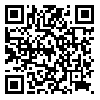BibTeX | RIS | EndNote | Medlars | ProCite | Reference Manager | RefWorks
Send citation to:
URL: http://jdisabilstud.org/article-1-2905-en.html
2- Faculty of Physical Education and Sport Sciences, Shahid Chamran University of Ahvaz, Ahvaz, Iran
3- Faculty of Physical Education and Sport Sciences, Razi University of Kermanshah, Kermanshah, Iran
4- PhD in Marketing and Sports Media, Department of Physical Education and Sports Science, University of Kurdistan, Kurdistan, Iran
Abstract
Background & Objective: Controlling balance and maintaining posture is the foundation of all voluntary motor skills, complex performance, and perceptual processes. In other words, maintaining balance depends on the integrated coordination of sensory messages. Sensory receptors in muscles, joints, ligaments, and skin send information about the sense of position and movement to the central nervous system. Sensory data are processed to determine direction and movement, and finally, appropriate movement responses are delivered to maintain balance. Balance is a multi-sensory activity composed of properly functioning the bodily, vestibular, and visual sensory systems. The knee's anterior cruciate ligament is rich in mechanoreceptors and is a crucial sensorimotor component in postural control. The anterior cruciate ligament is the most important knee ligament and is the main factor controlling the forward movement of the knee. Considering the sensory role of the anterior cruciate ligament and its rich source of proprioception and position in controlling balance from the point of view of movement control, one of the important measures after the injury of the anterior cruciate ligament of the knee is the evaluation of neuromuscular function. One of the most important aspects of neuromuscular assessment is balance control. This study determines the importance of the amount and significance of pasteurization control.
Methods: The present study was a case-control study. The study population includes athletes with unilateral anterior cruciate ligament injuries and healthy athletes living in Kermanshah City, Iran. The statistical sample consisted of 30 people with and without unilateral anterior cruciate ligament injury. They were divided into two groups: 15 in the control group and 15 in the experimental group, aged 20 to 30. According to the study's inclusion and exclusion criteria, the athletes referred to orthopedic centers, physiotherapy, and sports teams with anterior cruciate ligament injury for at least 6 months and at most 2 years were identified and selected. By choosing an athlete with anterior cruciate ligament injury, a healthy athlete matched with the injured athlete in age, height, weight, and type and level of sports experience was selected as a healthy athlete to participate in the research. A range was considered for each matching criterion to match healthy and injured athletes. The acceptable range for height was 5 cm, weight 3 kg, and age 3 years. Also, the participants were matched in terms of sports field and sports background. To match the activity level of the subjects, the Persian version of the Tegner physical activity level scale was used. It should be noted that the goal of the researchers in determining the range was to form two identical groups, and this range was chosen due to the limited number of available samples. At first, written consent was taken from them to participate in the research. The subjects were assessed for dynamic and static test control in the first step. The Y test was used for dynamic evaluation, and the Bess test was used for static analysis. To analyze the data, the independent t test was used to compare the between groups at a significant level of 0.05. The Shapiro-Wilk test was used to investigate the normal distribution of data.
Results: The results showed a difference between dynamic balance (p<0.001) and static (p=0.05) in athletes with anterior cruciate ligament injury and healthy counterparts in the dominant leg.
Conclusion: According to the results of the present study, athletes who underwent anterior cruciate ligament surgery in the knee after surgery had recovered from postural control disorder in the affected limb (lack of resistance to the balancing factor). Perhaps with the benefit of advanced rehabilitation principles, it is possible to enhance the sense of proprioception further, recover your balance acceptably, and return to patterns similar to those of healthy people.
| Rights and permissions | |
 |
This work is licensed under a Creative Commons Attribution-NonCommercial 4.0 International License. |




